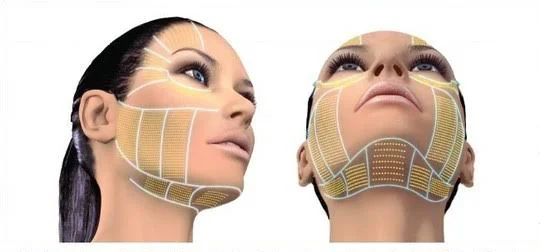One of the key symptoms of facial aging is the loss of the facial oval , a typical characteristic of faces between 15 and 30 years old. The facial oval is the shape of the face, taking as its lowest point the chin and rising to the cheeks and ending at the forehead without losing, never better said, that oval shape of the face.
When we are children, faces tend to be rounder, although younger children who are thin may already have a marked facial oval. As we grow, the bone structures of the face lengthen vertically and the image of a round face is lost in favor of a more oval face. As the years continue to pass, the tissues of the cheeks and around the mouth sag and make the face more square. Over time, this tissue loss can be so drastic that the jaw appears horizontally straight and from a square we go to a triangular-shaped face.
But aging is not the only thing that will alter our oval. Certain people hypertrophy (increase volume and strength) their masseter muscles. These muscles, one on each side of the jaw, in front of the ears, participate in chewing. But they are also the muscles that act excessively in stressful situations. They are responsible for some people suffering from bruxism, which is a pathology characterized by pain and a feeling of tiredness in the jaw and teeth when waking up, and which can last throughout the day. Being hypertrophied, they cause the jaw to become masculinized in women.
In short: the oval is going to be lost because we age or because our masseter muscles are larger than necessary.

What can we do to improve the oval without undergoing surgery?
There are several options:
- Raise tissues that may have fallen. To do this, procedures can be used alone or in combination, such as:
- Tension threads: they have a double effect: they act like Velcro initially and over time they promote the formation of collagen by pulling the tissues upward.
- Calcium hydroxyapatite: fills and projects the cheekbones and stimulates collagen synthesis, also lifting sagging tissues.
- Hyaluronic acid: moderately inflates tissues that have been “emptied” to try to return the lost volume.
- Radiofrequency or focused ultrasound: they tighten the skin (but do not affect its supporting tissues, so their indications are a little different), especially useful in the double chin.
- Reduce hypertrophy of the masseter muscles: by injecting botulinum toxin, the nervous stimulus that favors repeated contraction of the muscle and its excessive growth and strengthening is reduced. In this way we avoid bruxism from problems in the jaw and teeth and we slim the face.